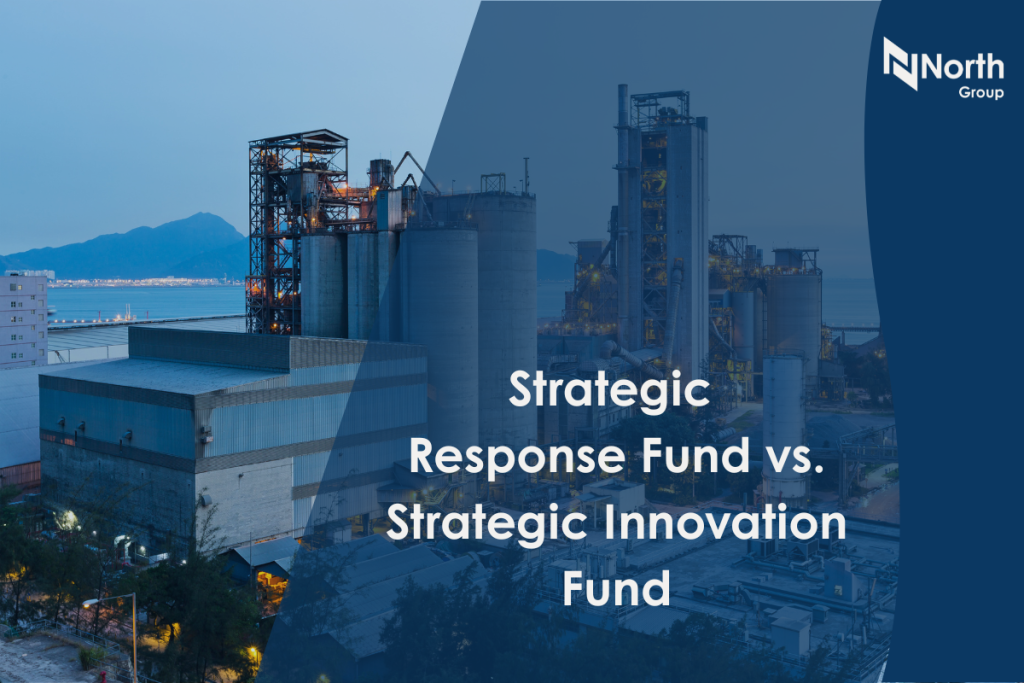U.S. tariffs on Canadian goods are not new, but their effects are evolving. What is new is how both startups and established manufacturers are experiencing these impacts in today’s economic environment, and how Budget 2025: Shifting from Reliance to Resilience is shaping the support mechanisms to help them respond.
Recent reporting suggests Canada’s economy is holding steadier than many predicted. The National Post notes that “the worst is behind us” in terms of broad economic shock. But at the company level, the signals tell a more nuanced story, especially in the innovation and manufacturing sectors.
A survey highlighted by Business in Vancouver found that more than 75% of Canadian startups expect tariffs to affect their business, either directly through higher costs or indirectly through supply-chain impacts. That aligns closely with what we’ve been hearing in our own conversations with clients: even firms not exporting to the U.S. are feeling pressure from rising input costs, shipment delays, and downstream pricing uncertainty.
Why This Matters & What We’re Seeing Across Our Client Network
Across manufacturing, supply-chain operations, and early-stage tech companies, tariff-related disruptions are showing up in:
- Input and landed costs continue to increase, particularly for advanced manufacturing, hardware, clean tech, and materials companies.
- Commercialization timelines are being affected, especially for startups attempting U.S. market entry or running pilot programs that depend on tariff-affected components.
- Financial planning is tightening, with founders, CFOs, and operations leaders explicitly modeling tariff scenarios into their burn rates and forecasting.
- Supply-chain restructuring is accelerating, as companies explore nearshoring and diversification to reduce exposure to U.S.-centric suppliers.
- Client margins are compressing, sometimes significantly, as tariffs compound inflationary pressures.
“For some companies, tariffs aren’t just a trade issue, they’re a financial planning issue that directly influences growth.”
These impacts also present opportunities for companies to take advantage of government incentives that reward process improvement, domestic capacity building, and supply-chain modernization—areas where many firms are already investing out of necessity.
How Budget 2025 Is Responding
Budget 2025 frames the moment as a shift away from reliance on a single dominant market, and toward a stronger, more resilient Canadian industrial base. Several measures stand out for companies facing tariff or supply-chain pressures:
1. Strategic Support for Companies Adjusting to Tariff Impacts
- A new $5-billion Strategic Response Fund to help firms diversify markets, retool operations, or shift supply chains.
- Up to $1 billion through Regional Development Agencies for businesses directly affected by tariff-driven cost or market disruption.
- Sector-specific supports, including loan guarantees and targeted programs for industries facing acute trade pressure.
2. Workforce & Skills Measures
- Over $570 million for labour-market training programs to support role transitions and upskilling.
- Expanded Work-Sharing and digital job-matching platforms designed to reduce workforce volatility.
3. Liquidity & Financing Tools
- A Large-Enterprise Tariff Loan Facility offering up to $10 billion in liquidity for companies facing tariff-related financial strain.
- BDC enhancements for SMEs requiring short-term stability during supply-chain or market adjustments.
4. “Buy Canadian” Procurement Shift
- New procurement rules and dedicated funding to help Canadian SMEs compete for federal contracts.
- When domestic suppliers aren’t available, contracts will still require Canadian content, creating opportunities for both product and technology providers.
5. Trade Diversification & Infrastructure Investment
- Ambitious commitments to double non-U.S. exports within a decade.
- Investments in trade corridors, ports, and transport infrastructure to support diversified global market access.
What This Means for Startups and Established Firms
Startups
Startups, particularly those in hardware, manufacturing, or dependent on U.S. customers or supply chains, should view this as a strategic moment to diversify. Budget 2025 opens doors for:
- Funding support during supply chain or cost disruptions
- New pathways into federal procurement streams
- Opportunities to tap into non-U.S. markets while incentive programs are expanding
- Strengthened credibility with investors through proactive risk-management
Established Manufacturers & Supply-Chain Firms
For mature firms, this is the time to develop detailed internal business cases that outline how tariffs are affecting operations and how support programs could accelerate or offset transition plans. Opportunities include:
- Financing for retooling or diversification
- Cost-offsetting training support for workforce transitions
- Access to new procurement channels built around domestic capability
- Liquidity tools to stabilize operations during market adjustments
What You Should Be Doing Now
- Identify which Budget 2025 programs align with your risk profile or expansion plans.
- Engage early with RDAs or export offices to position for upcoming funding intakes.
- Review upcoming federal procurement opportunities with the new “Buy Canadian” lens.
- Communicate your mitigation plan to boards, investors, and partners.
Final Thoughts
Tariffs may not be new, but the current policy response, and the shift toward resilience over reliance, is. Whether you’re building your first product line or managing a national manufacturing footprint, the months ahead represent a rare opportunity to rethink your market dependencies, strengthen your supply chain, and leverage new government supports.
If your team is assessing the impact of tariff changes or exploring resilience-building projects, we’re happy to walk through which funding programs align with your growth plans and how similar companies are successfully navigating the year ahead.

